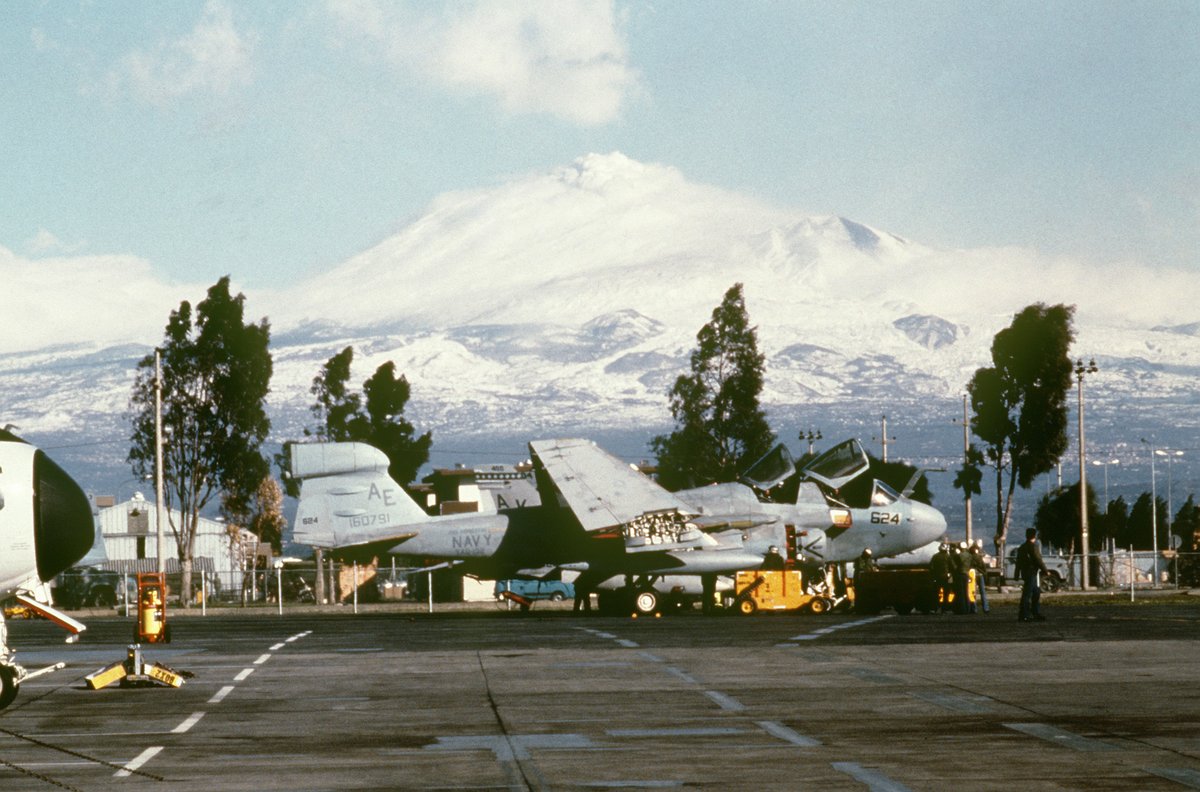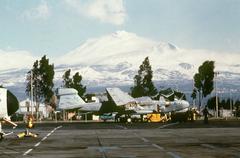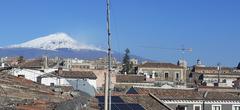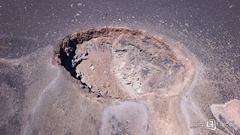
Mount Etna Visiting Hours, Tickets, and Travel Guide for Zafferana Etnea, Italy
Date: 14/06/2025
Introduction
Mount Etna, rising over 3,300 meters, is both Europe’s highest and most active volcano and a UNESCO World Heritage Site. Situated on Sicily’s eastern coast near the vibrant town of Zafferana Etnea, Etna offers a remarkable blend of geological wonders, deep-rooted myths, and rich local culture. Known as “a Muntagna” to locals, Etna has been erupting for hundreds of thousands of years, shaping the land and culture of Sicily. Zafferana Etnea, the “Gateway to Etna,” is famed for its honey, wines, and festivals, all nurtured by the volcano’s fertile soils. This comprehensive guide details the history, cultural significance, visiting hours, ticketing, tours, travel tips, accessibility, and nearby attractions, ensuring you plan a memorable and safe visit to Sicily’s volcanic heart.
Table of Contents
- Mount Etna and Zafferana Etnea: History and Culture
- Geology and Volcanic Activity
- Visitor Information: Hours, Tickets, and Tours
- Travel Tips and Getting There
- Nearby Attractions and Local Experiences
- Accessibility and Accommodation
- Safety and Environmental Considerations
- FAQs
- Conclusion and Practical Summary
- References
Mount Etna and Zafferana Etnea: History and Culture
Ancient Roots and Mythology
Mount Etna’s eruptions and imposing presence inspired generations of myths. Ancient Greeks believed Hephaestus, god of fire, had his forge inside Etna, while the monster Typhon was imprisoned beneath its craters (Tourist Secrets). Etna’s volcanic history also directly influenced regional events, such as the 396 B.C. eruption that halted a Carthaginian advance (AP News).
The Birth and Evolution of Zafferana Etnea
Zafferana Etnea, possibly named for the Arabic “Safràn” (yellow) or the saffron once cultivated here, grew around the Priory of San Giacomo (1387). Despite numerous lava threats—most notably in 1792, 1852, and 1992—the town has flourished, rebuilding and celebrating its resilience through festivals and religious events (Go-Etna).
Cultural and Economic Significance
Fertile volcanic soils fuel thriving agriculture, with Zafferana Etnea renowned for its honey, Etna DOC wines, pistachios, and mushrooms (World by Weekend). The town’s elegant Art Nouveau architecture and lively markets reflect a culture shaped by both adversity and abundance.
Geology and Volcanic Activity
Mount Etna’s summit height changes frequently due to eruptions, but it generally stands around 3,329–3,350 meters (GeologyScience). The volcano is a stratovolcano, formed where the African Plate subducts beneath the Eurasian Plate, creating multiple craters, lava fields, and tubes accessible from towns like Zafferana Etnea (ItaloAmericano).
Etna’s eruptions, both ancient and recent, have left indelible marks on the region—shaping the landscape, altering transport routes, and enriching soils. Modern monitoring by the INGV ensures safety for locals and visitors alike (Euronews).
Visitor Information: Hours, Tickets, and Tours
Visiting Hours
- Etna Park & Trails: Usually open daily from 8:00 or 9:00 AM to 5:00 or 6:00 PM. Hours may extend in summer. Always check Parco dell’Etna or Funivia dell’Etna for updates.
- Cable Car (Funivia dell’Etna): Typically runs 9:00 AM–4:00 PM, weather and volcanic activity permitting.
Tickets and Guided Tours
- Cable Car: €30–€35 round-trip for adults.
- 4x4 Jeep Tours: Combined with cable car, usually €60–€70.
- Guided Summit Tours: Mandatory above 2,900 meters, €50–€100 per person.
- Purchasing Tickets: Buy online via official sites or on-site at visitor centers. Advance booking is strongly recommended, especially during peak seasons (Sicily Active).
Accessibility
- Some visitor centers and paths accommodate differently-abled visitors, but volcanic terrain is often rugged. Contact tour operators for details.
Travel Tips and Getting There
- By Car: Most flexible option, with ample parking at Rifugio Sapienza and other access points (czechtheworld.com).
- Public Transport: AST buses connect Catania with villages like Zafferana Etnea; schedules may be unreliable.
- Tours: Many organized tours depart from Catania, Taormina, and Zafferana Etnea, often including transportation (Sicily Active).
Packing Essentials: Dress in layers, wear sturdy boots, bring sun protection, and carry water and snacks. In winter, add gloves and a warm hat.
Nearby Attractions and Local Experiences
- Zafferana Etnea Town Center: Art Nouveau villas, honey shops, local cafés, and festivals like Ottobrata Zafferanese (touristplaces.guide).
- Museo della Contea: Displays local art and the volcano’s historical impact.
- Parco dell’Etna: Over 58,000 acres for hiking, biking, and wildlife watching (AgediGroup).
- Wine Cellars: Taste unique Etna DOC wines grown in volcanic soil.
Accessibility and Accommodation
- Zafferana Etnea: Offers family-run B&Bs and boutique hotels with easy access to Etna.
- Catania: Wide range of hotels and hostels; good starting point for day trips.
- Mountain Refuges: Rifugio Sapienza and others provide simple lodging close to trails.
Safety and Environmental Considerations
- Volcanic Monitoring: INGV’s real-time network ensures timely alerts (Euronews).
- Trail Safety: Stay on marked paths, follow guide instructions, and check activity levels before visiting.
- Environmental Protection: Respect park rules, carry out trash, and avoid disturbing flora or fauna (Sicily Active).
- Health: Be aware of altitude sickness and volcanic gases. Carry masks or scarves during ashfall periods (The Green Voyage).
FAQs
Q: What are the standard visiting hours for Mount Etna?
A: Generally, 8:00 or 9:00 AM to 5:00 or 6:00 PM, varying by season and area.
Q: Are tickets required to visit Mount Etna?
A: Entry to the park is free, but tickets are needed for the cable car, jeep tours, and guided summit hikes.
Q: Is a guide required for hiking?
A: Yes, above 2,900 meters. Below this, self-guided hikes are allowed (Earth Trekkers).
Q: Is Mount Etna accessible for people with disabilities?
A: Some base areas and tours offer limited accessibility. Always check with providers in advance.
Q: What should I pack?
A: Layered clothing, sturdy boots, sun protection, water, and a mask for ash.
Q: How do I check volcanic activity before visiting?
A: Monitor updates from INGV and Parco dell’Etna.
Conclusion and Practical Summary
Visiting Mount Etna and Zafferana Etnea is an extraordinary journey through nature, culture, and history. Ensure a rewarding and safe experience by:
- Planning ahead: Check visiting hours, book tickets, and monitor volcanic activity.
- Respecting regulations: Stay on marked trails and follow guide instructions.
- Embracing local culture: Attend festivals, sample honey and wines, and explore Zafferana Etnea’s historic streets.
- Supporting sustainability: Follow park rules and minimize environmental impact.
For the latest updates, itineraries, and exclusive tips, download the Audiala app and follow our channels dedicated to Sicily’s heritage and natural wonders. Make your visit to Mount Etna and Zafferana Etnea a highlight of your Sicilian adventure!





